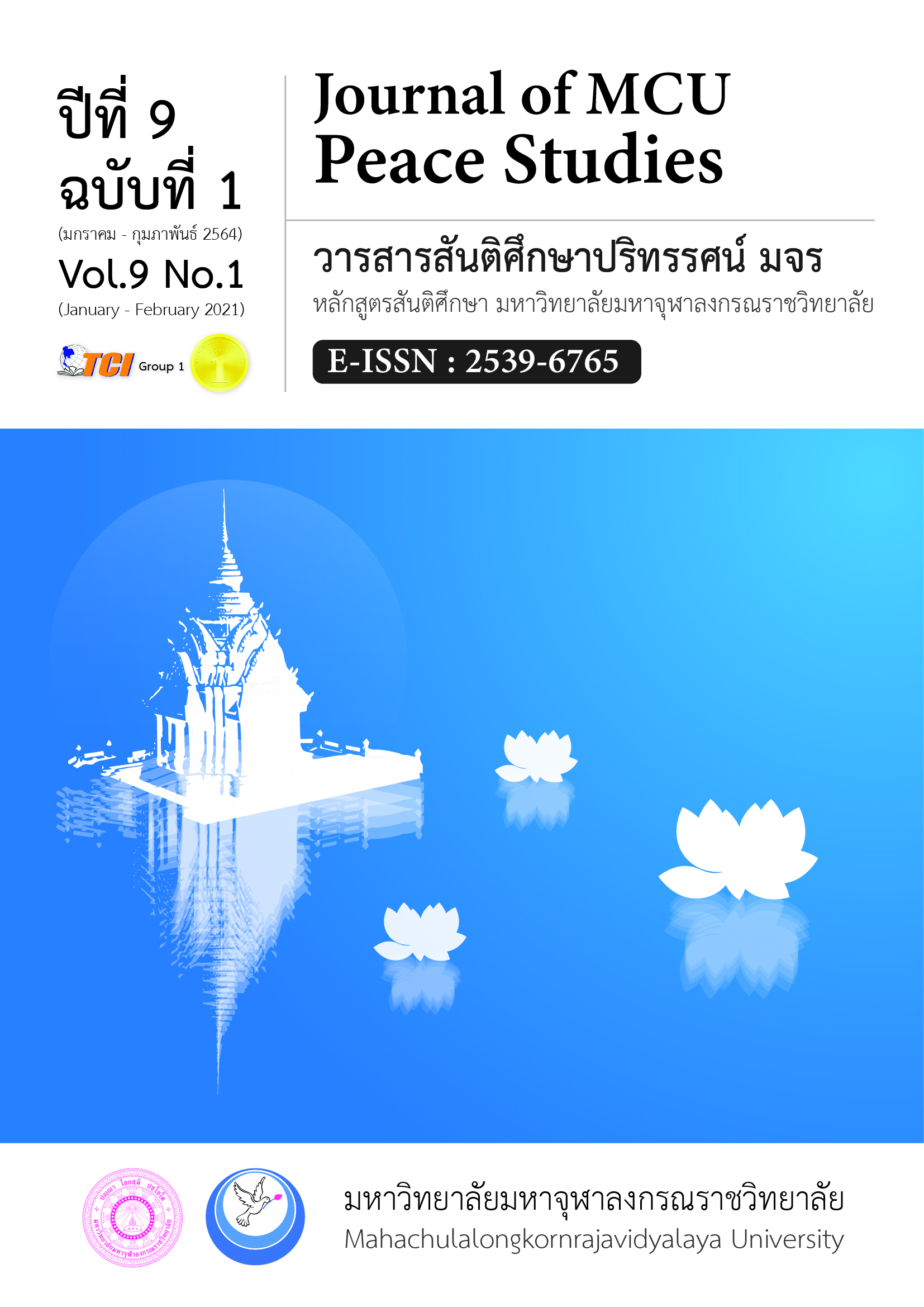Diagnostic Approach to Communicative Competence in English Speaking for Thai High School Students
Main Article Content
บทคัดย่อ
This research on diagnostic approach for Thai high schools in Thailand aimed:
(1) to study high school students’ English speaking skill components of English communicative competence, (2) to diagnose high school students’ English-speaking problems, and (3) to develop remedial speaking lessons to improve Thai high school EFL students’ speaking skills basing on teachers’ and high school students’ questionnaire results. This research was classified to be a research and development. The constructed speaking diagnostic test was to remedy the students’ speaking weaknesses, give corrective feedback, and develop remedial learning instruction for the students’ speaking fluency. The goal of the speaking diagnostic test was to help the students enhance their ability to use English in various situations, in school, community and society, and in the world community for exchange of knowledge as a basic tool for further education, career, and livelihood.
The samples were 99 teachers and 176 high school students in Surat Thani, by stratified random sampling and the sample sizes were used by the criterion of the research objectives. The obtained data from instruments were analyzed by the application of frequency and percentage. Results showed that a teacher survey by questionnaires identified high school students’ English-speaking skills and problems basing on components of English communicative competence in six aspects. To find remedial strategies, the results of the high school students’ English speaking problems were analysed using questionnaire results. The diagnostic test for English language teaching and learning, therefore, could fulfill the goal of remedial teaching and learning through the developed remedial materials by its direct and effective strategies to meet the needs and demand of individual students in solving their pronunciation problems.
Article Details
ทัศนะและความคิดเห็นที่ปรากฏในบทความในวารสาร ถือเป็นความรับผิดชอบของผู้เขียนบทความนั้น และไม่ถือเป็นทัศนะและความรับผิดชอบของกองบรรณาธิการ ยินยอมว่าบทความเป็นลิขสิทธิ์ของวารสาร
เอกสารอ้างอิง
Bachman, L. F., & Palmer, A. S. (1996). Language Testing in Practice. Oxford: Oxford University press.
British Council. (2020). Consonant Cluster. © British Council, 10 Spring Gardens, London SW1A 2BN, UK Retrieved February 12, 2020, from https://www.teachingenglish.org.uk/article/consonant-cluster.
EF Education First Ltd. (2018). EF EPI, EF ENGLISH PROFICENCY INDEX, The world’s largest ranking of English skills. Retrieved August 10, 2019, from https://www.ef.co.th/epi/regions/asia/thailand/.
Exam English. (2014). CEFR Levels. 2014 © Exam English Ltd. ALL Rights Reserved. Retrieved December 5, 2015, from http://www.examenglish.com/CEFR/cefr.php.
Slayen, G. (2009). Central Thai Phonology. Retrieved February 12, 2020, from http://www.thai-language.com/resources/slayden-thai-phonology.pdf.
Heaton, J.B. (1988). Writing English Language Tests. London: Longman.
Stephensen, H. (2016). Student’s book English Explorer 4. National Geographic™.
--------. (2016). Student’s book English Explorer 5. National Geographic™.
--------. (2016). Student’s book English Explorer 6. National Geographic™.
Beare, K. (2018). Understanding English Pronunciation Concepts. Retrieved February 11, 2020, from
https://www.thoughtco.com/understanding-english-pronunciation-concepts-1211977
Learning English. (2013). How-to-learn-english/strong-form-weak-form-english-conversation. Copyright www.learnenglish.vn 2013 Retrieved February 14, 2020, from http://learnenglish.vn/how-to-learn-english/strong-form-weak-form-english-conversation/
MacKenzie, M., Patchanok, K., & Phaisit, B. (2016). The competence and warmth of Thai students’ attitudes towards varieties of English: the effect of gender and perceptions of L1 diversity. Journal of Multilingual and Multicultural Development, 37(6), 536-550.
Manuel, d. S. (2016). My World student Book 4. New Yok: Mac Graw Hill Education.
---------. (2016). My World student Book 5. New Yok: Mac Graw Hill Education.
---------. (2016). My World student Book 6. New Yok: Mac Graw Hill Education.
Ministry of Education (2008). Basic core curriculum for A.D. 2008). Bangkok: Kurusapa Ladprao Publishing.
--------. (2014).The Guidelines on English language teaching and Learning Reforming Policy. Bangkok: Kurusapa Ladprao Publishing.
Ronnakiat, N. (2013). The application of phonetics to teaching English pronunciation. Bangkok: Thammasat University Press.
National Institute of Educational Testing Service (Public Organization). (2019). O-netresul. Retrieved April 2, 2019, from http://www.onetresult.niets.or.th.
Srisa-ard, B. (1980). Diagnostic test. Retrieved June 5, 2019, from http://sompattama.blogspot.com/2010/11/diagnostic-test.html.
Sukamolson, S. (1981). Theories in Language Testing and Persistent Problems in Testing the Achievement. Chulalongkorn Universtiy Language Institute. PasaaParitat Journal, 2.
Tashakkori, A., & Teddlie, C. (1998). Mixed Methodology: Combining Qualitative and Quantitative Approaches. New Delhi: Sage Publications.
Virginia, E., & Jenny. D. (2016). Upstream 4 Student’s Book. UK: Express Publishing.
----------. (2016). Upstream 5 Student’s Book. UK: Express Publishing.
----------. (2016). Upstream 6 Student’s Book. UK: Express Publishing.
Wiggins, G. (2005). Overview of UBD & The Design Template. Retrieved April 2, 2019, from https://files.software-carpentry.org/training-course/2012/08/UbDQuikvue1005.pdf
Wiggins, G., & Mc Tighe, J. (2005). Understanding by design (2nd ed.). Alexandria, VA: Association for Supervision and Curriculum Development ASCD.
Wongsothorn, A. (2012). The Interface between Language Assessment and English Classroom Practices: What research says. FLLT Journal, 1(2).


